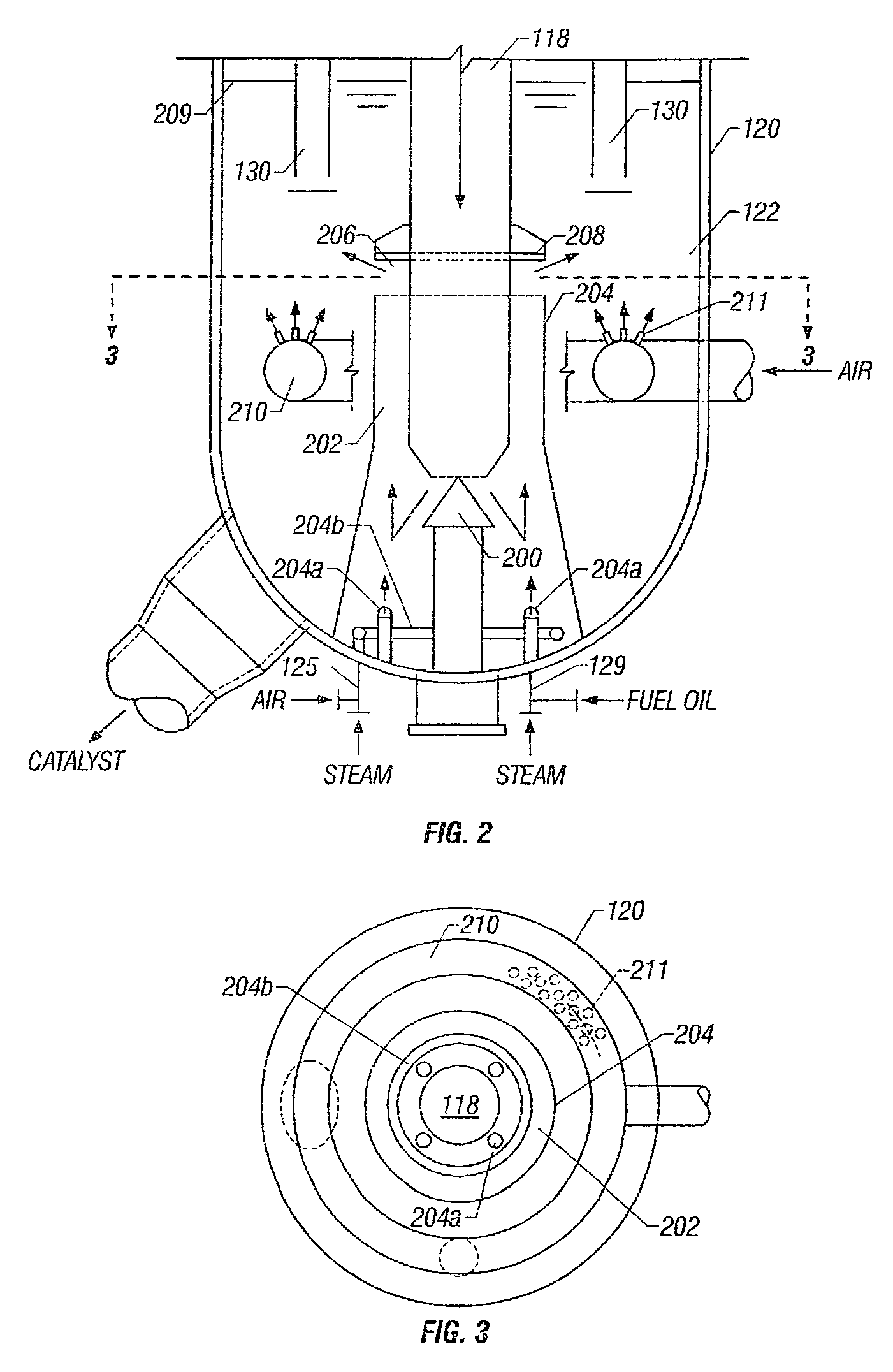Catalyst regenerator with a centerwell
a catalyst and centerwell technology, applied in the field of catalyst recovery, can solve the problems of difficult processing and/or disposal of slurry oil from the quench tower, difficult removal of catalyst fines, and significant differences between the light olefin fcc process and the conventional fcc operation of the quench tower, and achieve the effect of removing catalyst losses in the effluent gas
- Summary
- Abstract
- Description
- Claims
- Application Information
AI Technical Summary
Benefits of technology
Problems solved by technology
Method used
Image
Examples
Embodiment Construction
[0027]The present invention is a method and system for recovering fines from the light FCC effluent and regenerating spent catalyst. As used in the specification and claims, a light FCC unit or process is one in which the hydrocarbon feedstock to the FCC riser has a very low resid content such that there is insufficient carbon deposited on the catalyst to sustain combustion for regeneration without a supplemental fuel source, and there is insufficient fuel oil in the riser effluent for conventional slurry oil recovery, i.e. less than 2 weight percent of the hydrocarbons in the reactor effluent gases from the riser have an atmospheric boiling point above 550° F. (288° C.). However, if this amount is greater than 2 weight percent, the filters can optionally be bypassed and this material used as the slurry. The FCC process encompasses a fluidized catalytic reaction system, converting a light hydrocarbon feed stream preferably having a high olefin content to a product slate rich in prop...
PUM
| Property | Measurement | Unit |
|---|---|---|
| boiling point | aaaaa | aaaaa |
| weight percent | aaaaa | aaaaa |
| temperature | aaaaa | aaaaa |
Abstract
Description
Claims
Application Information
 Login to View More
Login to View More - R&D
- Intellectual Property
- Life Sciences
- Materials
- Tech Scout
- Unparalleled Data Quality
- Higher Quality Content
- 60% Fewer Hallucinations
Browse by: Latest US Patents, China's latest patents, Technical Efficacy Thesaurus, Application Domain, Technology Topic, Popular Technical Reports.
© 2025 PatSnap. All rights reserved.Legal|Privacy policy|Modern Slavery Act Transparency Statement|Sitemap|About US| Contact US: help@patsnap.com



